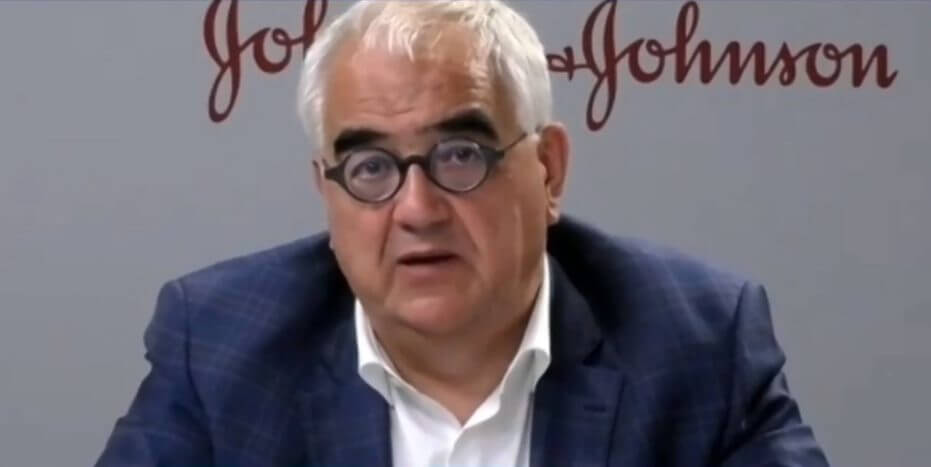BIO Digital 2020 Highlights: Leveraging Platforms and Partnerships to Develop COVID-19 Vaccines in Record Time
By Ruchi Jhonsa, Ph.D.
The BIO Digital Conference held between June 8-12, saw over 7000 participants from 64 countries come together for a two-day virtual meeting to discuss the progress made against the COVID-19 pandemic and showcase the work that biopharma and the government are doing in this regard. One of the panel discussions moderated by Dr. Mark McClellan, Director of the Duke Margolis Center for Health Policy comprised of five eminent scientists:
- Gregory Glenn, Chief Scientific Officer, Novavax
- Margaret Hamburg, Foreign Secretary of the National Academy of Medicine
- Peter Marks, Director, Center for Biologics Evaluation Research, FDA
- Gary Nabel, Chief Scientific Officer, Sanofi
- Paul Stoffels, Vice Chairman, and Chief Scientific Officer, Johnson, and Johnson
The panel covered several topics, including rising mistrust amongst masses, multiple approach vaccines, international regulatory alignments, and joint efforts by government and industry in combating COVID-19.
 Dr. Mark McClellan, Director of the Duke Margolis Center for Health Policy
Dr. Mark McClellan, Director of the Duke Margolis Center for Health Policy
International Regulatory Alignments
When it comes to conducting clinical trials and delivering the vaccine on time, every country needs to be in sync. The panel agreed that the active involvement of regulatory communities around the globe is imperative to solve the problem at hand. They emphasized the need to create a new global governance framework that is aligned and harmonized to tackle issues that could dampen vaccine development and testing.
Dr. Marks, who has been closely coordinating with global regulators to expedite the development and availability of safe vaccines, highlighted some of his team’s efforts. They are closely working with groups of regulators, including the European Medicines Agency (EMA), Health Canada, and several others. He mentioned that an international coalition of medicines regulatory authorities (ICMRA) initiated by Dr. Hamburg, met last month to discuss important matters regarding COVID-19. The coalition, which represents close to 60 different countries, discussed the safety, sustainability, scalability, manufacturing, and efficacy of the vaccine in special populations.
 Dr. Peter Marks, Director, Center for Biologics Evaluation Research, FDA
Dr. Peter Marks, Director, Center for Biologics Evaluation Research, FDA
In his words, “This is an exciting time to work together. And if we do things right, we’ll actually figure out that there may be populations that benefit from one vaccine more than another. And of course, the more production of vaccines there is as well, the easier that’s going to be”.
When asked if he foresees any challenges in attaining these critical endpoints and other design features for Phase 2/3 trials that are coming with the international regulatory bodies, he said that they are all going to work together and more than the techniques, they will be looking into the clinical endpoints. In his opinion, there is no argument over the size of trials as everyone understands that a vaccine made for millions of people will need sizable safety and efficacy datasets.
Multiple Vaccine Approach
Dr. Nabel answered this question by giving “shots on goal analogy.” He said although it is important to take a lot of shots to win, it is also needed that one changes the position on the hockey rink to get the best shot. Comparing the current situation to this, Dr. Nabel said there are multiple coronavirus targeting vaccines in development. However, each of them differs in nature and properties. Some are protein-based, which harbor laboratory synthesized protein pieces of the virus, while others contain mRNA or DNA coding for spike protein of the virus.
While both the types of vaccines can mount humoral and cellular responses, mRNA based vaccines are more likely to give a better response as they can also provoke innate immune cells. However, if the global distribution of vaccines is taken into account, mRNA vaccines might not work as well. He says, “The protein vaccine for flu that we made can be stored in a form where it essentially can be transported at room temperature and therefore can be distributed around the world to places where there’s not a cold chain. With the mRNA vaccine, we require minus 80 degrees storage, and there are many places in the world where that vaccine simply won’t reach people.” Therefore, it is important for immunologic, efficacy, distribution, and manufacturing reasons to develop vaccines using multiple approaches.
 Dr. Gary Nabel, Chief Scientific Officer, Sanofi
Dr. Gary Nabel, Chief Scientific Officer, Sanofi
However, vaccine efficacy will also be impacted by the mutations acquired by the vaccine target, the viral spike (S) protein, which, according to Dr. Mark, is “fairly prevalent.” To this, Dr. Nabel answered that he most certainly is concerned about this issue, and therefore it will be good to have some diversity. He reckons that the vaccine prototype currently developed in China, using an inactivated version of SARS-CoV-2, could be a good alternative in case all the vaccines directed against S protein fail to work. Dr. Marks also agreed that it is crucial to have several vaccine options and backups like convalescent plasma or hyper immunoglobulin or directed monoclonal antibodies.
Challenges in Conducting Adequately Sized Clinical Trials
“It’s going to be a challenge,” said Dr. Stoffels. “It is a herculean task to get the vaccines tested in a placebo-controlled way with good efficacy points and using good laboratories. However, there is a big effort ongoing between the government and the industry on how we can get this done.” In his view, the problem with large-scale trials with multiple vaccines is getting that many participants for testing.
 Dr. Paul Stoffels, Vice Chairman, and Chief Scientific Officer, Johnson, and Johnson
Dr. Paul Stoffels, Vice Chairman, and Chief Scientific Officer, Johnson, and Johnson
He said, “It all depends on incidence. So let’s say we are chasing incidents of transmission and tried to find the places where by the time we get to testing, there are still reasonable incidents between one to three percent.” Currently, discussions are ongoing to include countries like Brazil, South Africa, and India in the trials, which are experiencing a high rate of transmission and have a large number of patients. The government is mobilizing the Department of Defense, different groups at NIH, CROs, and industry to work on this issue. Dr. Stoffels is hopeful that with this capacity and cooperation, it will be easier to get the sizable trials done quickly.
Benefits of Partnership and Collaborations
The National Institute of Health and Foundation for the NIH has founded ACTIV (accelerating COVID-19 Therapeutic Interventions and Vaccines), a COVID-19 directed program. It brings together more than a dozen leading biopharma, the health and human services office of the assistant secretary for preparedness and response, the CDC, the FDA, and the EMA to streamline clinical trials, develop a framework for prioritizing vaccine and drug candidates, and coordinate regulatory processes. This program is providing infrastructure, subject matter expertise, and funding that facilitates the entry of the most promising candidates in the clinical trials.
“It is through these government partnerships and industry collaborations, we are able to conduct the trials smoothly,” noted Dr. Glenn. He mentioned that these collaborations are helping a small company like his to acquire funding for R&D, testing, and manufacturing vaccines. Currently, several funding agencies, including CEPI and Gates foundation, are working in parallel with the government to fund companies actively involved in vaccine development. Dr. Glenn said,’ “I would say it’s really encouraging to see how CEPI, the Gates Foundation, and the U.S. government have all stepped in. Of course, it’s important for all of us. But in our case, in particular, it connects us with so much expertise and enables us to contribute a big part in the solution.”
Dr. Nabel gave his two-point wisdom on the topic. He said that the supply chain, which is one of two main problems, can be solved through collaborations. Everyone who is currently making the vaccines or drugs is essentially using the same reagents, and one needs to find a way to scale their production. He mentions that Dr. Moncef Slaoui, the former executive of GSK, who is now leading the white house coronavirus vaccine task force, is paying attention to this. However, he urges everyone to pull in and support the scaling effort.
He also cautioned that we need to be prepared for a pandemic of this scale in the future. In his opinion, scientists must be more proactive than reactive, “We need to develop a global biosecurity network where we can anticipate outbreaks, where we have more active surveillance, where we have ready to go diagnostic tests, where we have banks of antibodies that are prepared and ready to be deployed without having months and months of delay,” said Dr. Nabel. He urges everyone to get organized and use modern technology to prevent a repeat.
Growing Mistrust Amongst People
Dr. Hamburg agreed that there is a problem of mistrust amongst people, and the perception that we have moved too quickly and we have not followed the best possible science makes us vulnerable. Dr. Marks fears that if we are unable to gain people’s trust and if 30 or 40 percent of the population forgoes vaccines, then despite 80% effectiveness of the vaccine, we will not be able to generate herd immunity.
Despite this problem, Dr. Hamburg believes “this is really an opportunity for those of us in the science, medical, public health community to really reinforce why science matters, the importance of evidence and to really capture what is now huge public interest and concern in advancing medical product development, whether it’s diagnostics, drugs or vaccines, and really underscore just how important this work is.”
 Dr. Margaret Hamburg, Foreign Secretary of the National Academy of Medicine
Dr. Margaret Hamburg, Foreign Secretary of the National Academy of Medicine
In her opinion, to gain public confidence, it is imperative to make sure that the vaccine the scientific community presents to the public is safe and efficient and is backed by strong data. She wants the entire scientific community to be aware of the risks and benefits of their chosen vaccine candidate and understand who all will be protected before it is administered to the public.
Editor: Rajaneesh K. Gopinath, Ph.D.
References
©www.geneonline.com All rights reserved. Collaborate with us: service@geneonlineasia.com









